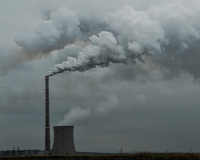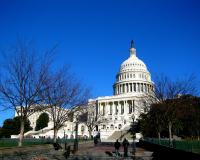
Vibrant Environment
Environmental Justice
All | Biodiversity | Climate Change and Sustainability | Environmental Justice | Governance and Rule of Law | Land Use and Natural Resources | Oceans and Coasts | Pollution Control

Over 30 years ago, Toxic Wastes and Race in the United States confirmed that race was the primary factor in determining the location of siting toxic wastes. Published by the United Church of Christ, the report’s release set in motion a movement addressing environmental health and social justice now known as environmental justice (EJ). In the decades to follow, EJ became institutionalized in our government agencies with the formation of the Environmental Equity Working Group at EPA in 1990 and Executive Order No. 12898 signed in 1994. Outside of government, the report catalyzed the formation of grassroots groups to address issues of environment health in their communities. The EJ movement also reorients the mainstream definition of environment. It frames the environment as not simply the woods, mountains, and ocean, but as our neighborhoods, our workplaces, and our homes.

What would you do if your job was to manage a small coastal community besieged by job loss, irate voters, hurricanes, oil spills, and hipsters? Here’s a way to find out: boot up your laptop or tablet and check out ELI’s new “serious game,” Digital Cards Against Calamity.
In the wake of Hurricanes Maria, Irma, Harvey, and Florence, which have resulted in an estimated total of over 3,200 deaths and more than $375 billion in damage, finding ways to increase a community’s “resilience IQ” should be a national priority.

Businesses historically have had a complicated relationship with the natural environment. The Industrial Revolution, marked by the boom of economic development and birth of modern business, emerged at the expense of natural resources and public health. Historical and current business activities continue to contribute to some of our most pressing global challenges, including climate change, resource scarcity, and social inequality. Concepts such as corporate social responsibility and environmental social governance attempt to establish a new relationship between business, the environment, and communities. These principles aspire to synergize business prosperity, sustainability, and social equity.

On Monday, April 16, ELI, the Environmental Justice Committee of the American Bar Association’s Section of Civil Rights and Social Justice (CRSJ), Georgetown University Law Center, Georgetown Environmental Law Society, and the D.C. Bar Association hosted a seminar entitled: Environmental Justice in the 21st Century Part 2: Threats and Opportunities. The event focused on changes and challenges in the environmental justice movement and featured a panel of environmental justice experts and a keynote speech from Rep. Raul Ruiz (D-Cal.). Representative Ruiz, a medical doctor from Coachella Valley, California, delivered a passionate speech describing the struggles facing communities of color in his district who are often disenfranchised from the environmental decisionmaking process. His bill, the Environmental Justice Act of 2017 (H.R. 4114), the companion to Sen. Cory Booker’s (D-N.J.) bill introduced in the Senate (S. 1996), aims to empower communities to have meaningful input into environmental decisions.

Earlier this year, the New York City Council took a notable step forward in addressing common indoor environmental health hazards. The Council passed Law 2018/055, which amends the city’s housing maintenance code to require private landlords to prevent and remediate indoor asthma triggers in their multifamily residential buildings.

Just over five months have elapsed since Hurricane Harvey battered the Texas Coast, dropping more than 50 inches of rain on parts of the Houston area. The storm’s devastation was swift, killing 88 people and displacing many thousands. Yet, Harvey’s full impacts continue to unfold. Beyond imposing huge material losses, the storm has taken a significant toll on the health of those in its wake. It may be wise to understand storm events like Harvey not only as short-term physical disruptors, but as public health crises that will likely unfold over many years, long after media attention and political will to respond may have cooled.

January is National Radon Action Month, a good time for policymakers to consider what action they can take to address one of the most important—and preventable—indoor health risks facing their constituents. Radon is responsible for around 21,000 lung cancer deaths in the United States each year. That makes it the second leading cause of lung cancer overall and the leading cause among non-smokers, according to EPA.

On October 24, 2017, Sen. Cory Booker (D-NJ) and Rep. Raul Ruiz, M.D. (D-CA) announced The Environmental Justice Act of 2017 (EJA), S. 1996, H.R. 4114, a bill focused on strengthening legal protections against environmental harms for communities of color, low-income communities, and indigenous communities. The EJA would be the first federal law of its kind, and follows in a 25 year legacy of legislative efforts, starting with the great Rep. John Lewis (D-GA) in the 1990s, to codify environmental justice (EJ) once and for all.

As reported in the Environmental Law Reporter’s Weekly Update this month, two cases involving the controversial Dakota Access Pipeline have been decided in the courts.
Chief among those cases was Standing Rock Sioux Tribe v. Dakota Access. In that case, a district court held that the Dakota Access pipeline could continue to operate while the U.S. Army Corps of Engineers corrects deficiencies in its environmental assessment for the project.

Tribes and Native villages are demonstrating reinvigorated environmental activism as they face increased pressures on natural resource use. Consequently, some of the most significant new developments in environmental law are occurring in Indian country. This month, ELI features a two-part webinar series on “Emerging Environmental Issues in Native Communities.”